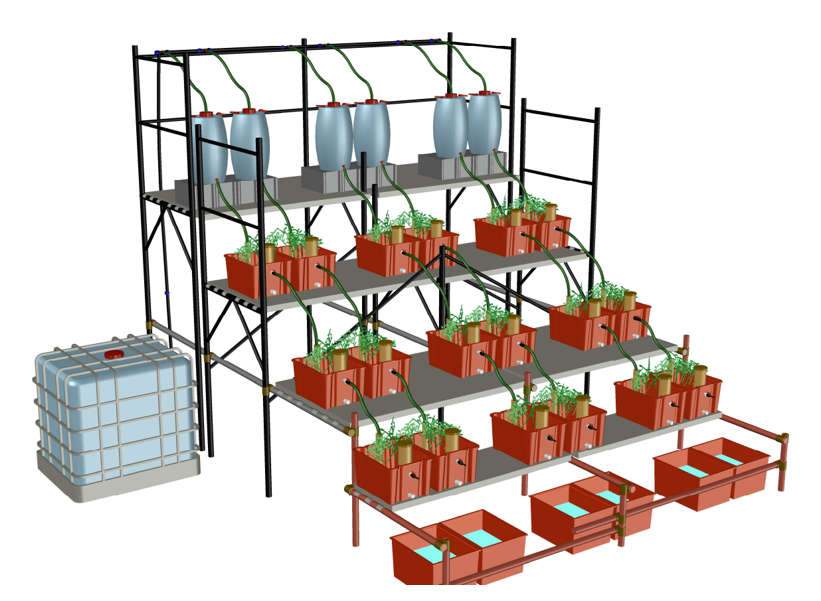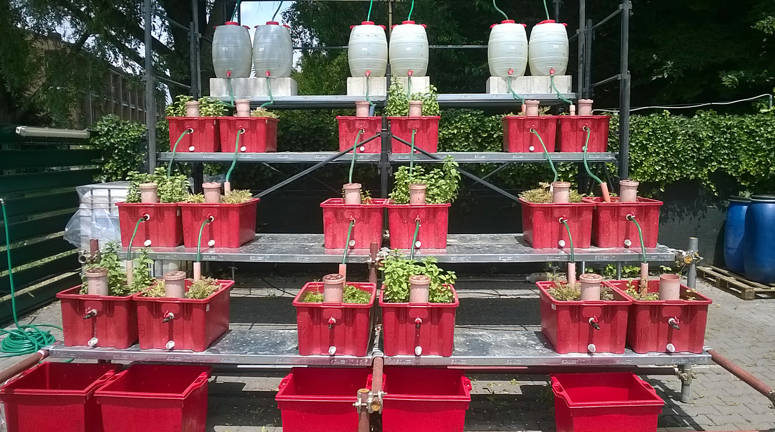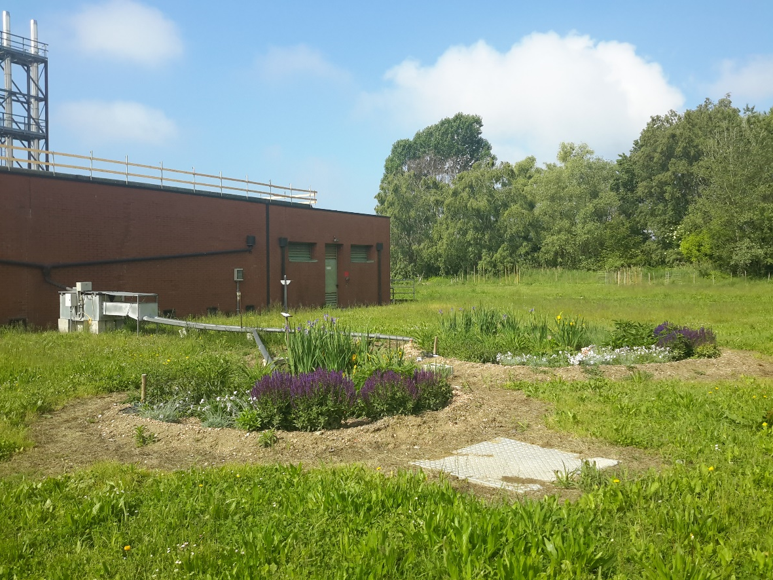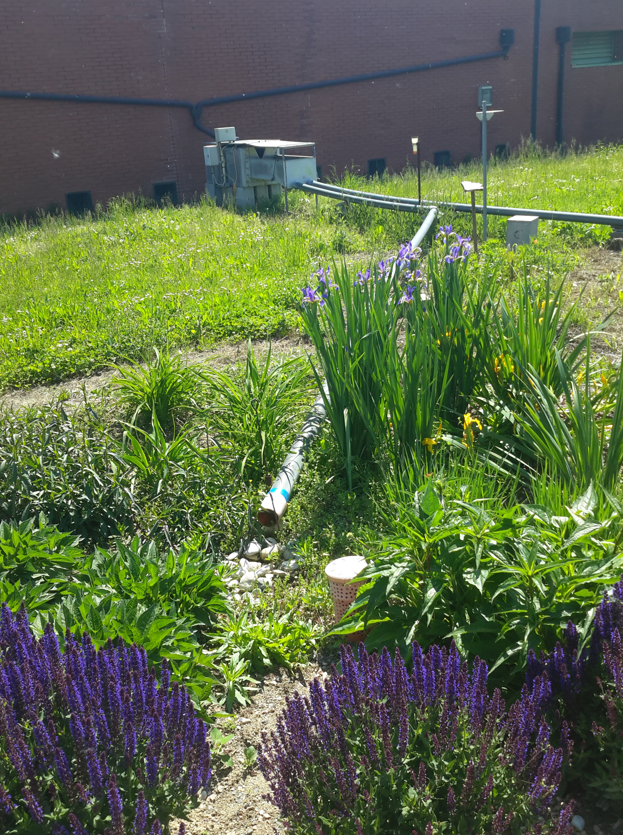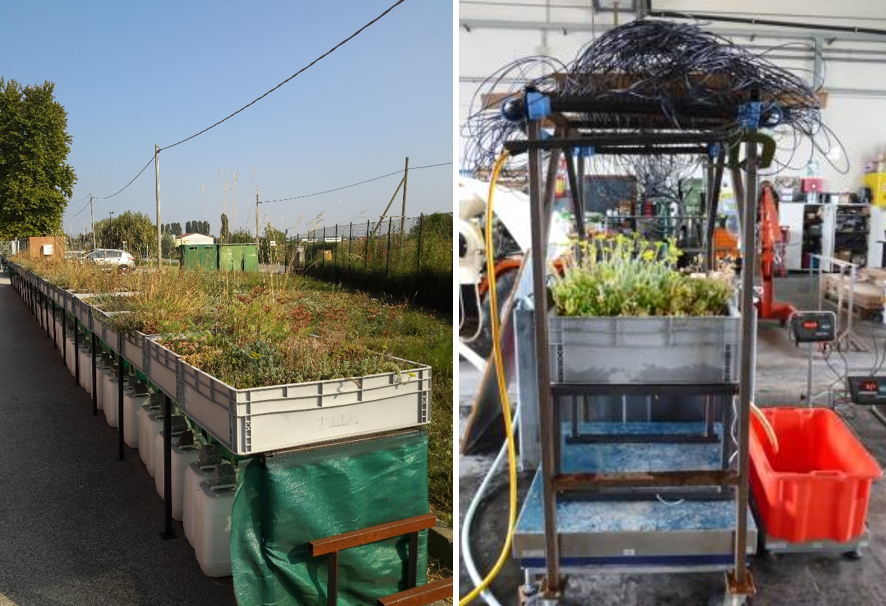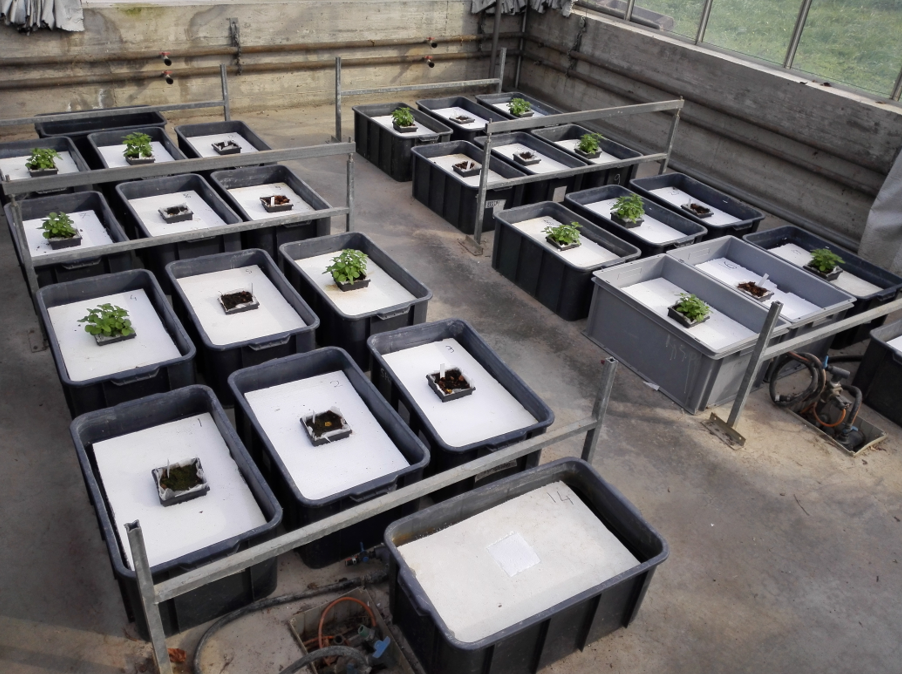University of Padua
Experimental plant type
Wall cascade constructed wetland
Influent
Grey domestic wastewater
The University of Padua has installed an innovative pilot system for the grey water treatment. The plant has been designed in order to reduce surface area needed (Wall cascade constructed wetland) by combining benefits of the traditional green walls (water retention, urban greening, heat waves mitigation etc.) with those of constructed wetlands (mostly wastewater treatment). The water treated comes from the restaurant at the Agripolis campus of the University of Padua, that prepares around 70,000 meals a year with wastewater production of around 90 m3.
The pilot system consists of six lines of surface flow constructed wetlands, each one with three basins placed at different heights in order to enable gravity flow. The plant species used are Mentha acquatica L., Oenanthe javanica D.C. and an intercropping of Lysimachia punctata L. and Nummularia L., that were selected as they can easily adapt to the saturated conditions.
Experimental plant type
Rain gardens
Influent
Rainwater
The experimental site managed by the University of Padua has two rain gardens (RG) that receive stormwater collected from a building roof with an area of around 220 m2. The RGs are of circular form and have surface of 10.5 and 21 m2. The systems are 0.8 m deep and filled with substrate that consists of 50% (v/v) sand, 25% compost and 25% excavated soil. The surface of the RGs is concave and is surrounded with a berm in order to enable storage of larger volumes of water during intense rain events. The stormwater from the roof is transported to an accumulation tank through 5 downspouts. The tank has level sensors and equal water volumes are conveyed sent to the two RGs. Any excess water is collected by the overflow systems and wells.
Humidity sensors are placed at different depths of the RGs in order to record soil water content in the area where plant root system is present. Different perennial herbaceous plants will be used during the experimental period and their suitability will be evaluated: Iris spuria, Iris pseudacorus, Hemerocallis hybrida 'Glittering Treasure', Aster Novi-belgii 'White Ladies', Panicum virgatum 'Cardinal', Dianthus lumnitzeri 'Tatra Fragrance', Echinacea purpurea, Salvia ×sylvestris 'Mainacht', Rudbeckia fulgida ‘Goldsturm’.
Experimental plant type
Green roof
Influent
Rainwater
A series of green roof microcosms is also studied. Different plastic boxes are filled with two different layers of accumulation/drainage, two different types of substrate (e.g. volcanic and recycled brick) and two vegetation mixtures consisting of Sedum and herbaceous plants. Each type of microcosm has two replicates. At the bottom of each element a hole has been made through which excess water is discharged. The outflow volumes are accumulated in tanks and measured by weighing after each rain event.
Hydraulic behaviour of the systems was studied with the use of a rain simulator at different rainfall levels in the absence and presence of vegetation. The plans species chosen are: Sedum. sexangulare, S. acre, S. album, S. reflexum, S. spurium, Bromus erectus, Euphorbia cyparissias, Cota tinctoria, Thymus serpyllum, Dianthus sp.
Experimental plant type
Detention tanks
Influent
Surface runoff
In addition, a Wet Bioretention Pond (WBP) with the maximum dimensions of 9.40×7.30 m and 1.65 m of depth is studied. The basin is waterproofed with a polyolefin layer. The WBP collects stormwater from a paved parking and roofs of adjacent buildings using the existing drainage system, in total 2270 m2 of drainage area. The collected water is conveyed to an accumulation tank and later pumped to the WBP. The excess water from the WBP is stored in another tank and later transported to a secondary canal.
Floating cell elements (Tech-ia®), made of ethylene-vinyl acetate, of rectangular shape (0.53x0.95 m) are placed on the surface of the WBP. The original elements were modified due to specific requirement of the experimental system, and were equipped with baskets able to hold 1 L of expanded clay. Following plant species were used: Bacopa caroliniana, Caltha palustris, Iris 'Black Gamecock', Lysimachia punctata 'Alexander', Mentha aquatica, Oenanthe javanica 'Flamingo', Phalaris arundinacea 'Picta', Typha laxmannii, Houttuynia cordata 'Chameleon, Lobelia siphilitica, Schizostylis coccinea ‘Mrs Hegarty’, in total 54 floating elements.
Currently, in a parallel test, the opportunity to replace the expanded clay with a substrate consisting of peat and zeolite is considered. Moreover, the plants might be fertilised with a controlled release fertiliser in order to facilitate their growth. Furthermore, a weir tank system able to measure inflow and outflow volumes is under construction.
